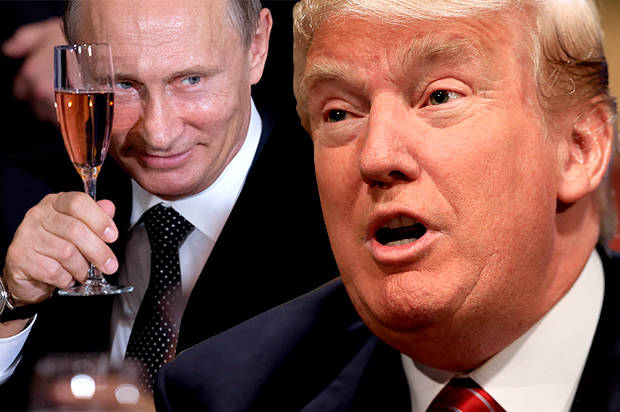A report prepared for the Senate that provides the most sweeping analysis yet of Russia’s disinformation campaign around the 2016 election found the operation used every major social media platform to deliver words, images and videos tailored to voters’ interests to help elect DonaldTrump — and worked even harder to support him while in office.
The report, a draft of which was obtained by The Washington Post, is the first to study the millions of posts provided by major technology firms to the Senate Intelligence Committee, led by Sen. Richard Burr (R-N.C.), its chairman, and Sen. Mark Warner (Va.), its ranking Democrat.
The bipartisan panel plans to release it publicly along with another study later this week.
The research — by Oxford University’s Computational Propaganda Project and Graphika, a network analysis firm — offers new details of how Russians working at the Internet Research Agency, which U.S. officials have charged with criminal offenses for meddling in the 2016 campaign, sliced Americans into key interest groups for targeted messaging.
These efforts shifted over time, peaking at key political moments, such as presidential debates or party conventions, the report found.
The data sets used by the researchers were provided by Facebook, Twitter and Google and covered several years up to mid-2017, when the social media companies cracked down on the known Russian accounts.
The report, which also analyzed data separately provided to House Intelligence Committee members, contains no information on more recent political moments, such as November’s midterm elections.
“What is clear is that all of the messaging clearly sought to benefit the Republican Party — and specifically Donald Trump,” the report says. “Trump is mentioned most in campaigns targeting conservatives and right-wing voters, where the messaging encouraged these groups to support his campaign. The main groups that could challenge Trump were then provided messaging that sought to confuse, distract and ultimately discourage members from voting.”
The new report offers the latest evidence that Russian agents sought to help Trump win the White House. Democrats and Republicans on the panel previously studied the U.S. intelligence community’s 2017 finding that Moscow aimed to assist Trump, and in July, they said investigators had come to the correct conclusion.
Despite their work, some Republicans on Capitol Hill continue to doubt the nature of Russia’s meddling in the last presidential election.
The Russians aimed particular energy at activating conservatives on issues such as gun rights and immigration, while sapping the political clout of left-leaning African American voters by undermining their faith in elections and spreading misleading information about how to vote.
Many other groups — Latinos, Muslims, Christians, gay men and women, liberals, Southerners, veterans — got at least some attention from Russians operating thousands of social media accounts.
The report also offered some of the first detailed analyses of the role played by YouTube, a subsidiary of Google, and Instagram, owned by Facebook, in the Russian campaign, as well as anecdotes about how Russians used other social media platforms — Google+, Tumblr and Pinterest — that have received relatively little scrutiny.
The Russian effort also used email accounts from Yahoo, Microsoft’s Hotmail service and Google’s Gmail.
Many of the findings track, in general terms, work by other researchers and testimony previously provided by the companies to lawmakers investigating the Russian effort.
But the fuller data available to the researchers offered new insights on many aspects of the Russian campaign.
The report traces the origins of Russian online influence operations to Russian domestic politics in 2009 and says that ambitions shifted to include U.S. politics as early as 2013 on Twitter.
Of the tweets the company provided to the Senate, 57 percent are in Russian, 36 percent in English and smaller amounts in other languages.
The efforts to manipulate Americans grew sharply in 2014 and every year after, as teams of operatives spread their work across more platforms and accounts to target larger swaths of U.S. voters by geography, political interests, race, religion and other factors.
The Russians started with accounts on Twitter, then added YouTube and Instagram before bringing Facebook into the mix, the report said.
